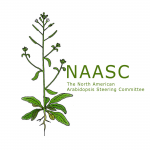Guo-Ling “Gillian” Nan: The Plant Cell First Author

 Guo-Ling “Gillian” Nan, co-first author of “A cascade of bHLH-regulated pathways program maize anther development”
Guo-Ling “Gillian” Nan, co-first author of “A cascade of bHLH-regulated pathways program maize anther development”
Current Position: Life Science Research Professional, Stanford University, USA
Education: PhD in Horticulture at University of Hawaii at Manoa, MSc in Botany at National Taiwan University, BSc in Botany at National Chung-Hsing University
Non-scientific Interests: listening to music, gardening, watching movies, traveling.
Brief bio: Since young age, I enjoy everything in the garden where my playground was. Hence, it’s no surprise that I become a plant biologist. However, I wouldn’t have made it this far if it weren’t for all the supporting mentors, colleagues, and peers along my path.
When I started working as a lab assistant in an algae lab under Prof PC Chen from whom I was amazed by the scientific thinking beyond what is taught in a textbook and truly discovered my passion for research. I knew at the time that I wanted to pursue a higher degree. For my Msc degree, I studied heat shock proteins in chloroplasts at NTU under Dr CY Lin and Dr YM Chen. For my PhD, I studied genetic engineering of orchid for virus resistance at UH under Dr AR Kuehnle alongside Dr H Kamemoto (Emeritus). For my first job, I worked on genetic engineering of pineapple at Hawaii Agriculture Research Center under Dr C Nagai alongside Dr P Moore of USDA-ARS director.
Since I joined the lab of Dr Ginny Walbot at Stanford University in 1998, I have been involved in several projects focusing on corn. Starting with the maize gene discovery project, we used an engineered RescueMu transposon to generate large-scale gene tagging populations and sequencing data. Afterwards, we embark on our exciting quest to study male sterile genes, collaborating with Dr Z Cande of UC-Berkeley, followed by our ongoing project with Dr BC Meyers at Danforth Center. I have been involved in characterization and cloning of several male sterile genes, including the historic ms23 of maize. We reported here the impact of Ms23 along with three other interacting bHLHs (Ms32, bHLH122, and bHLH51) on anther development and tassel fertility, while only the former three affected the biogenesis of 24-nucleotide phasiRNAs. We can’t wait to unveil many more exciting stories in the near future. Let’s do it, TC!



